Asset tokenization is revolutionizing how we represent, trade, and manage real-world assets in the digital realm. By converting ownership rights of physical or intangible assets into digital tokens on a blockchain, businesses can unlock unprecedented liquidity, accessibility, and efficiency. Whether you’re looking to tokenize real estate, artwork, commodities, or intellectual property, this guide will walk you through the complete process of creating tokenized assets on blockchain platforms.
From selecting the right blockchain infrastructure to navigating regulatory requirements, we’ll cover everything you need to know to successfully implement tokenization for your specific use case. Let’s dive into the transformative world of blockchain-based asset tokenization and discover how it can reshape ownership in the digital age.
What is Asset Tokenization?
Asset tokenization transforms physical and intangible assets into digital tokens on a blockchain
Asset tokenization is the process of converting the rights to an asset into a digital token on a blockchain. These tokens represent either full or fractional ownership of the underlying asset and can be bought, sold, or traded on digital platforms. The blockchain provides a secure, transparent, and immutable record of ownership, enabling more efficient asset management and transfer.
Key Benefits of Asset Tokenization
Enhanced Liquidity
Traditionally illiquid assets like real estate or fine art can be divided into smaller, more affordable units, making them accessible to a broader range of investors and creating more active markets.
Increased Accessibility
Tokenization removes geographical barriers and high minimum investment thresholds, allowing global investors to access previously restricted markets with minimal capital requirements.
Improved Transparency
All transactions are recorded on a blockchain ledger, creating an immutable history of ownership and price movements that enhances trust and reduces fraud risk.
Greater Efficiency
Smart contracts automate processes like compliance checks, dividend distributions, and ownership transfers, reducing administrative overhead and transaction costs.
Fractional Ownership
High-value assets can be divided into smaller, more affordable units, making them accessible to a broader range of investors and creating more active markets.
24/7 Trading
Unlike traditional markets with limited operating hours, tokenized assets can be traded around the clock on global digital exchanges.
Technical Requirements for Creating Tokenized Assets
Before diving into the tokenization process, it’s essential to understand the technical infrastructure required to create and manage tokenized assets effectively. Here are the key components you’ll need:
Blockchain Platforms for Tokenization
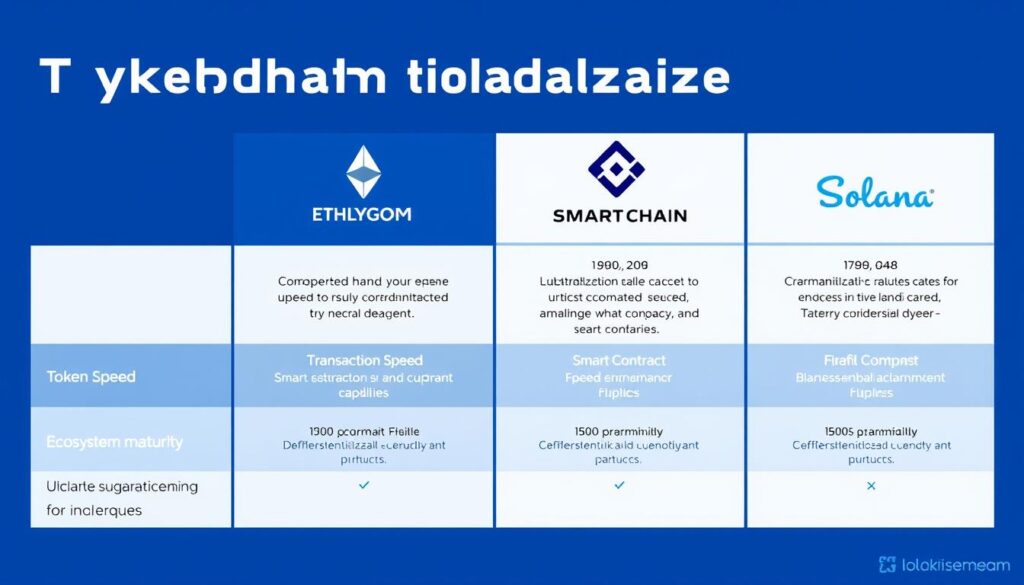
| Blockchain Platform | Key Features | Token Standards | Best For |
| Ethereum | Mature ecosystem, extensive developer tools, high security | ERC-20, ERC-721, ERC-1155, ERC-1400 | Security tokens, established projects with higher budgets |
| Polygon | Low fees, Ethereum compatibility, high throughput | Same as Ethereum (Layer 2 solution) | High-volume transactions, cost-sensitive applications |
| Binance Smart Chain | Low fees, fast transactions, growing ecosystem | BEP-20, BEP-721, BEP-1155 | Quick deployment, lower transaction costs |
| Solana | Ultra-high speed, low fees, growing ecosystem | SPL Token Standard | High-frequency trading, performance-critical applications |
| Algorand | Carbon-negative, high security, instant finality | Algorand Standard Asset (ASA) | ESG-conscious projects, financial applications |
Need help selecting the right blockchain platform?
Our blockchain experts can assess your specific tokenization needs and recommend the optimal platform for your use case.
Smart Contract Fundamentals
Smart contracts are self-executing programs that run on blockchain networks and form the backbone of tokenization. They automate and enforce the rules governing your tokenized assets, including:
- Token issuance and distribution parameters
- Ownership rights and transfer mechanisms
- Compliance requirements and restrictions
- Dividend or revenue distribution rules
- Governance mechanisms and voting rights
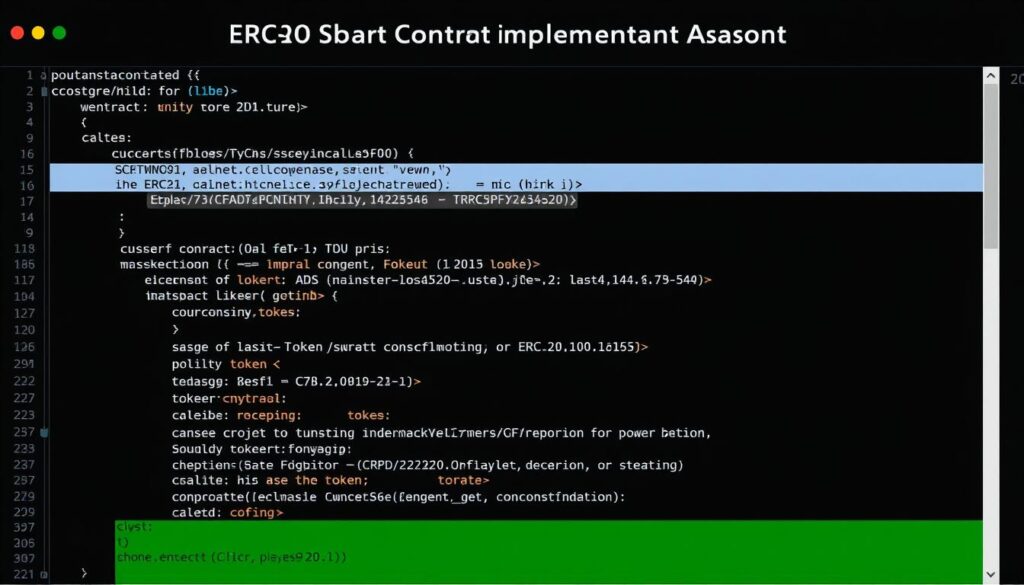
Example of a Solidity smart contract for an ERC-20 token implementation
Token Standards
Token standards define the technical specifications and functionalities of your tokenized assets. Choosing the right standard is crucial for compatibility and functionality:
Fungible Token Standards
- ERC-20: The most common standard for fungible tokens where each token is identical and interchangeable
- ERC-1400: Security token standard with built-in compliance features
- ERC-1404: Restricted tokens with transfer limitations for regulatory compliance
Non-Fungible Token Standards
- ERC-721: Standard for unique, non-interchangeable tokens (NFTs)
- ERC-1155: Multi-token standard supporting both fungible and non-fungible tokens
- ERC-3643: Compliant security token with identity management
Regulatory Compliance and Legal Considerations
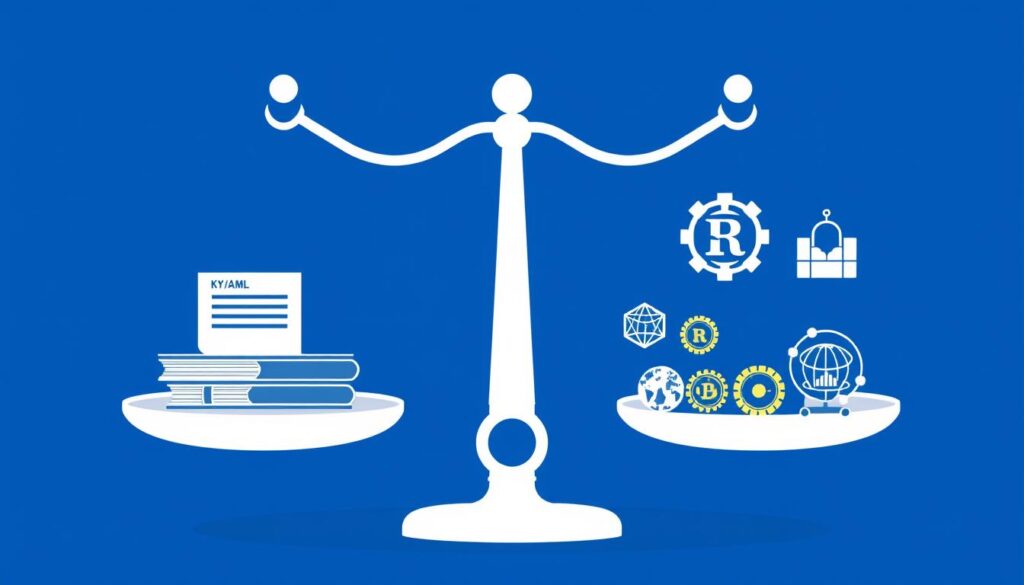
Navigating the regulatory landscape is one of the most challenging aspects of asset tokenization. Regulations vary significantly by jurisdiction and asset type, making compliance a complex but essential component of any tokenization project.
Key Regulatory Considerations
Securities Regulations
Many tokenized assets may be classified as securities, subjecting them to securities laws and regulations. In the US, the SEC applies the Howey Test to determine if a token is a security. Similar frameworks exist in other jurisdictions, such as MiFID II in Europe.
KYC/AML Requirements
Know Your Customer (KYC) and Anti-Money Laundering (AML) procedures are mandatory for most tokenized assets. These requirements help prevent fraud, money laundering, and terrorist financing by verifying the identity of investors.
Data Protection Laws
Tokenization platforms must comply with data protection regulations like GDPR in Europe or CCPA in California, especially when handling personal information during KYC processes.
Tax Implications
Tokenized assets may have complex tax implications regarding capital gains, income, and transfer taxes. These vary by jurisdiction and asset type, requiring careful planning and documentation.
Pro Tip: Consult with legal experts specializing in blockchain and securities law before launching any tokenization project. Regulatory requirements vary significantly by jurisdiction and asset class.
Compliance-by-Design Approach
Modern tokenization platforms implement a “compliance-by-design” approach, embedding regulatory requirements directly into the smart contracts and token architecture:
- Transfer Restrictions: Smart contracts can enforce investor qualification checks before allowing token transfers
- Jurisdictional Controls: Geo-fencing capabilities to prevent transactions from restricted territories
- Identity Verification: On-chain or off-chain KYC/AML verification linked to token ownership
- Reporting Automation: Automated generation of regulatory reports and audit trails
Navigate the Regulatory Landscape with Confidence
Download our comprehensive guide to regulatory compliance for tokenized assets across major jurisdictions.
Step-by-Step Process to Create Tokenized Assets
Creating tokenized assets involves several key stages, from asset selection and valuation to token issuance and management. Here’s a comprehensive breakdown of the process:
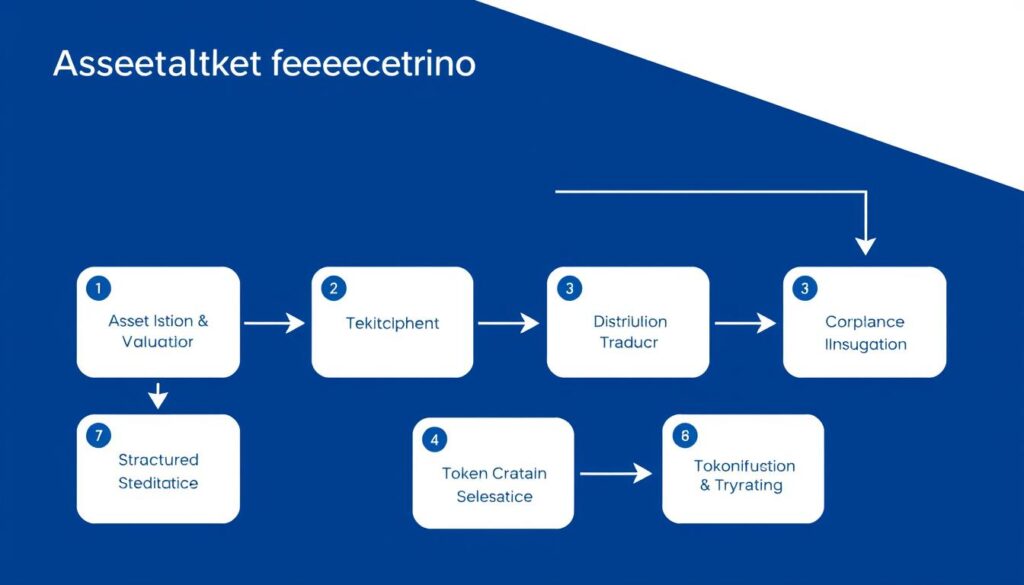
The complete asset tokenization workflow from selection to management
1. Asset Selection and Valuation
The first step is to identify and evaluate the asset you want to tokenize:
- Conduct thorough due diligence on the asset’s ownership, legal status, and encumbrances
- Perform professional valuation using industry-standard methodologies
- Assess the asset’s suitability for tokenization (liquidity potential, market demand, etc.)
- Document all relevant asset information for disclosure to potential investors
2. Legal Structure Setup
Establish the legal framework that will connect the physical asset to its digital representation:
- Create a Special Purpose Vehicle (SPV) or legal entity to hold the asset
- Draft legal documentation defining token holder rights and obligations
- Establish governance mechanisms for decision-making related to the asset
- Develop compliant offering documents (prospectus, offering memorandum, etc.)
3. Blockchain Platform Selection
Choose the blockchain platform that best suits your specific tokenization needs:
- Evaluate platforms based on security, scalability, cost, and ecosystem support
- Consider compatibility with existing systems and integration requirements
- Assess the platform’s regulatory compliance features and market acceptance
- Determine if a public, private, or hybrid blockchain approach is most appropriate
4. Smart Contract Development
Create the smart contracts that will govern your tokenized asset:

“Smart contracts are the backbone of tokenization, encoding the rights, restrictions, and behaviors of your tokenized asset. Their quality and security directly impact the success of your tokenization project.”
Here’s a simplified example of an ERC-20 token contract in Solidity:
// SPDX-License-Identifier: MIT
pragma solidity ^0.8.0;
import "@openzeppelin/contracts/token/ERC20/ERC20.sol";
import "@openzeppelin/contracts/access/Ownable.sol";
contract RealEstateToken is ERC20, Ownable {
string public propertyAddress;
uint256 public propertyValue;
uint256 public totalTokens;
constructor(
string memory _name,
string memory _symbol,
string memory _propertyAddress,
uint256 _propertyValue,
uint256 _totalSupply
) ERC20(_name, _symbol) {
propertyAddress = _propertyAddress;
propertyValue = _propertyValue;
totalTokens = _totalSupply;
_mint(msg.sender, _totalSupply);
}
function updatePropertyValue(uint256 _newValue) public onlyOwner {
propertyValue = _newValue;
}
}Security Alert: Always conduct thorough security audits of your smart contracts before deployment. A single vulnerability could lead to significant financial losses and reputational damage.
5. Token Creation and Issuance
Deploy your smart contracts and create the tokens that represent your asset:
- Deploy the smart contracts to your chosen blockchain network
- Mint the initial token supply according to your tokenization model
- Implement any token lockups or vesting schedules as needed
- Configure token parameters such as divisibility, transferability, and metadata
6. Compliance Integration
Implement the necessary compliance mechanisms to ensure regulatory adherence:
- Integrate KYC/AML verification processes for investor onboarding
- Implement transfer restrictions based on investor qualifications
- Set up reporting systems for regulatory compliance
- Establish audit trails for all token-related activities
Streamline Your Tokenization Process
Our tokenization platform handles the technical complexity, allowing you to focus on your business objectives.
7. Distribution and Trading
Make your tokens available to investors through primary issuance and secondary trading:
- Conduct a compliant token offering (STO, private placement, etc.)
- List tokens on appropriate exchanges or trading platforms
- Establish liquidity mechanisms to support token trading
- Implement investor communication channels for updates and information
8. Ongoing Management
Maintain and manage your tokenized asset over its lifecycle:
- Distribute dividends or revenue shares to token holders
- Provide regular updates on asset performance and valuation
- Manage governance processes for key decisions
- Handle regulatory reporting and compliance updates
Real-World Use Cases of Asset Tokenization
Asset tokenization is being applied across various industries, transforming how assets are owned, traded, and managed. Here are some compelling real-world applications:
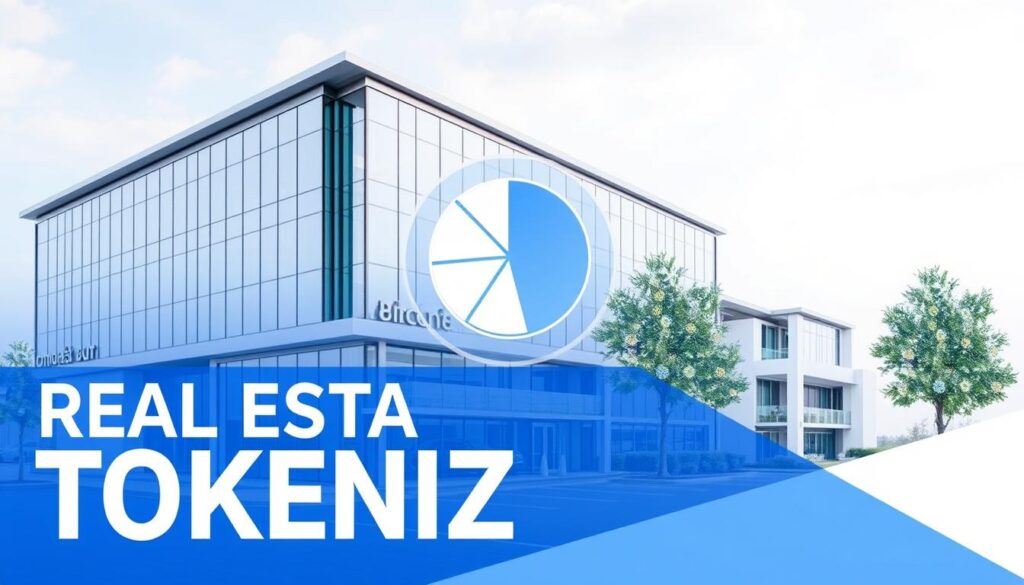
Real estate tokenization enables fractional ownership of high-value properties
Real Estate Tokenization
Real estate is one of the most promising applications for tokenization, transforming how properties are financed, owned, and traded:
Case Study: St. Regis Aspen Resort
In 2018, the St. Regis Aspen Resort successfully tokenized 18.9% of the hotel’s equity ($18 million) through Aspen Digital Tokens. This pioneering project demonstrated how high-value commercial real estate could be fractionalized and offered to qualified investors globally.
The tokenization enabled:
- Lower minimum investment thresholds
- Streamlined transaction processes
- Enhanced liquidity for investors
- Global access to U.S. real estate investment
Art and Collectibles
The art market is being revolutionized by tokenization, making fine art accessible to a broader range of investors:
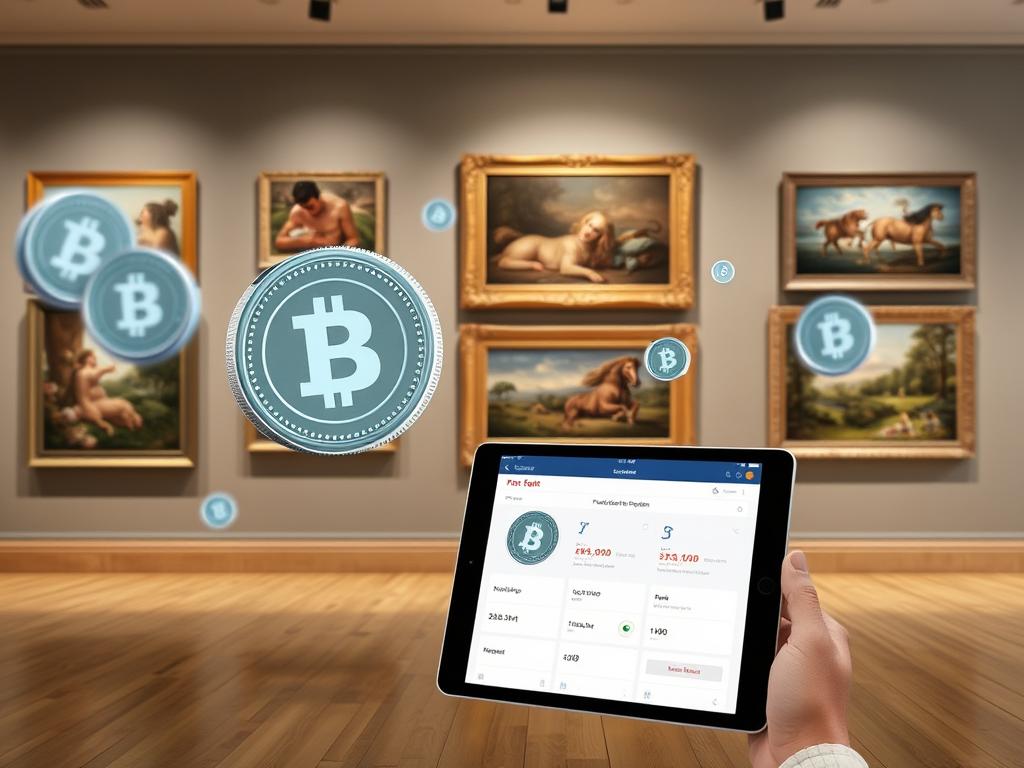
Case Study: Masterworks Platform
Masterworks has pioneered art tokenization by acquiring blue-chip artworks and offering fractional ownership through security tokens. The platform has tokenized works by artists like Banksy, Basquiat, and Monet, allowing investors to own shares in multi-million dollar paintings with investments starting at just $1,000.
Benefits include:
- Access to previously inaccessible asset class
- Portfolio diversification into non-correlated assets
- Potential for appreciation in value
- Secondary market liquidity
Commodities and Natural Resources
Tokenization is transforming how commodities and natural resources are traded and invested in:
Case Study: Tether Gold (XAUT)
Tether Gold (XAUT) is a digital token backed by physical gold, where each token represents ownership of one troy fine ounce of gold on a London Good Delivery bar. This tokenization allows investors to own gold without the logistical challenges of physical storage and security.
Key advantages include:
- Direct ownership of physical gold
- No storage or insurance costs
- 24/7 trading capability
- Fractional ownership possibilities
- Easy transfer and settlement
Challenges and Solutions in Asset Tokenization
While asset tokenization offers tremendous benefits, implementing it successfully requires addressing several key challenges:
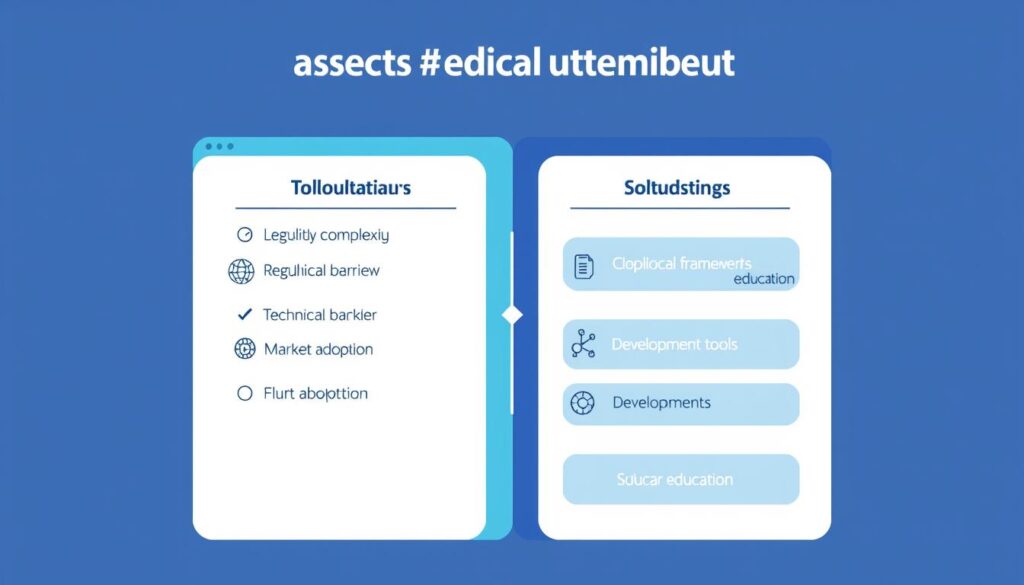
Challenges
- Regulatory Uncertainty: Evolving and inconsistent regulations across jurisdictions
- Technical Complexity: Steep learning curve for blockchain implementation
- Integration Issues: Connecting blockchain with legacy systems
- Market Adoption: Investor education and acceptance hurdles
- Valuation Standards: Lack of standardized approaches for tokenized assets
Solutions
- Regulatory Engagement: Proactive collaboration with regulators and compliance-by-design
- Simplified Platforms: User-friendly tokenization tools and frameworks
- Middleware Solutions: API-based integration layers for legacy systems
- Education Initiatives: Investor resources and transparent documentation
- Industry Standards: Participation in standardization efforts
Overcoming Technical Barriers
The technical complexity of blockchain implementation can be a significant hurdle for many organizations. Here are strategies to address this challenge:
Development Tools and Frameworks
Leverage existing development tools and frameworks to simplify the tokenization process:
- OpenZeppelin: Library of secure, reusable smart contracts
- Truffle Suite: Development environment for Ethereum
- Hardhat: Ethereum development environment for professionals
- Web3.js/Ethers.js: JavaScript libraries for blockchain interaction
Tokenization Platforms
Consider using established tokenization platforms to streamline implementation:
- Polymath: Security token platform with compliance features
- Securitize: End-to-end platform for digital securities
- Harbor: Compliance platform for tokenized securities
- Tokeny: Compliant tokenization infrastructure
Overcome Technical Challenges with Expert Support
Our blockchain development team can help you navigate the technical complexities of asset tokenization.
Addressing Regulatory Compliance
Regulatory compliance remains one of the most significant challenges in asset tokenization. Here’s how to address it effectively:
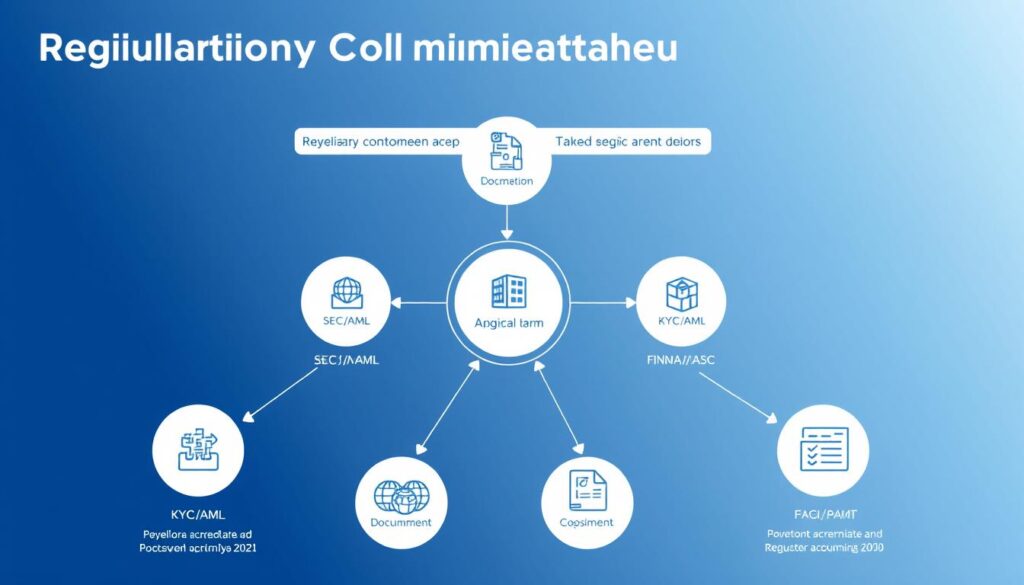
- Jurisdictional Analysis: Conduct thorough legal analysis in all relevant jurisdictions
- Compliance Partners: Work with specialized legal firms and compliance providers
- Programmable Compliance: Implement compliance rules directly in smart contracts
- Ongoing Monitoring: Establish systems for tracking regulatory changes
- Industry Associations: Participate in self-regulatory organizations and standards bodies
Future Trends in Asset Tokenization
The asset tokenization landscape continues to evolve rapidly. Here are the key trends shaping the future of this transformative technology:
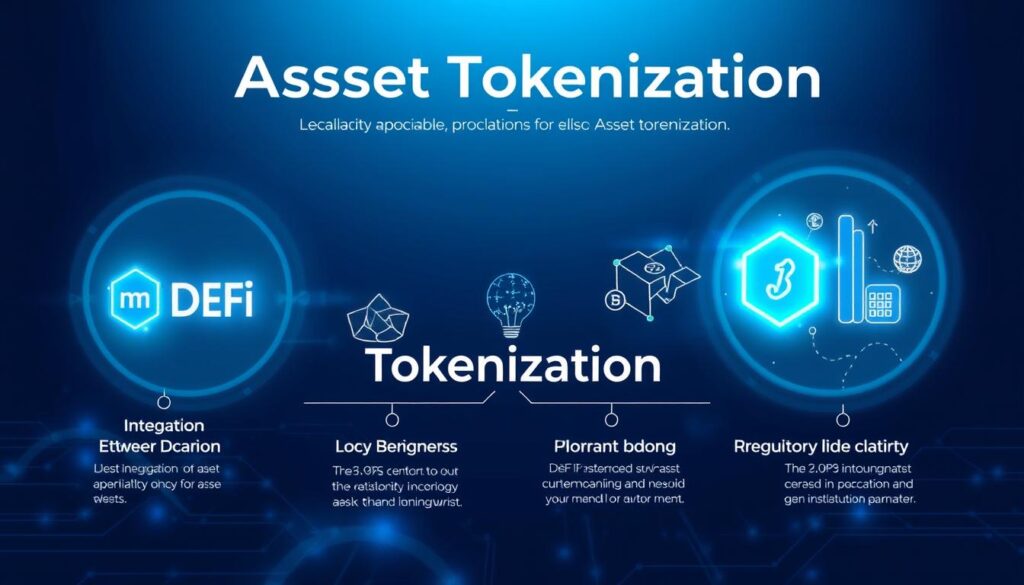
The evolving landscape of asset tokenization
Institutional Adoption
Major financial institutions are increasingly embracing tokenization. JPMorgan, Goldman Sachs, and BlackRock have all launched tokenization initiatives, signaling mainstream acceptance and integration with traditional finance.
Regulatory Clarity
Regulatory frameworks are maturing globally, with jurisdictions like Switzerland, Singapore, and Liechtenstein establishing clear guidelines for tokenized assets, reducing uncertainty and encouraging innovation.
Cross-Chain Interoperability
Emerging protocols are enabling tokenized assets to move seamlessly between different blockchain networks, enhancing liquidity and creating a more connected tokenization ecosystem.
DeFi Integration
Tokenized real-world assets are increasingly being integrated with decentralized finance (DeFi) protocols, enabling novel financial products like collateralized lending against tokenized real estate or art.
Tokenized Carbon Credits
Environmental assets like carbon credits are being tokenized to increase transparency, reduce fraud, and improve market efficiency in the growing climate finance sector.
AI and Tokenization
Artificial intelligence is being combined with tokenization to enhance asset valuation, risk assessment, and automated compliance, making tokenization more efficient and accessible.
“By 2030, we expect to see up to $16 trillion of assets tokenized on blockchain networks, representing approximately 10% of global GDP.”
Essential Tools and Resources for Asset Tokenization
Successfully implementing asset tokenization requires the right tools, platforms, and resources. Here’s a curated selection to help you get started:
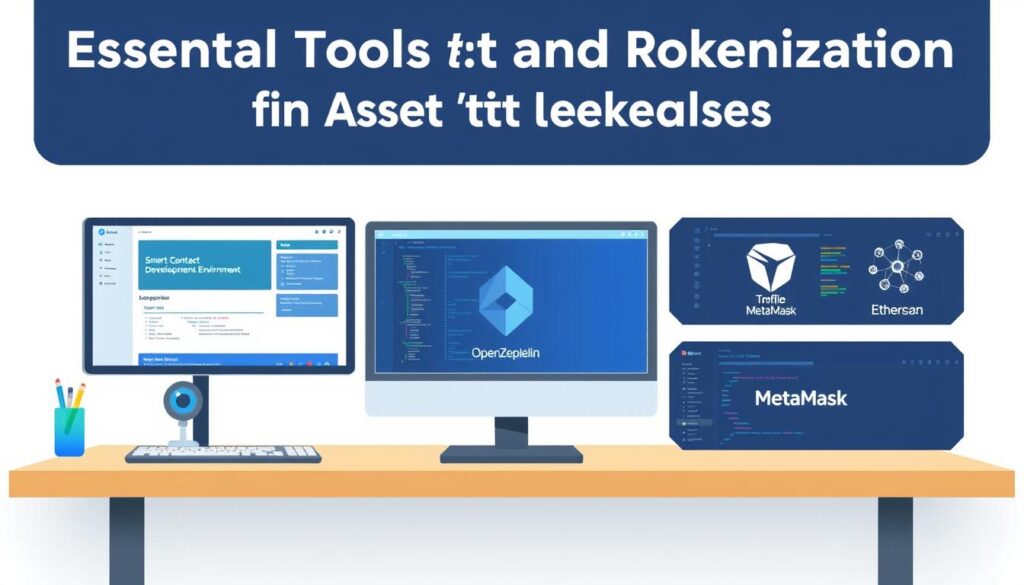
Essential development tools for asset tokenization projects
Development Tools
| Tool | Description | Best For |
| OpenZeppelin | Library of secure, reusable smart contracts with implementations of ERC standards | Smart contract development, security best practices |
| Truffle Suite | Development environment, testing framework, and asset pipeline for Ethereum | End-to-end dApp development |
| Hardhat | Ethereum development environment for professionals | Advanced smart contract development and testing |
| Web3.js/Ethers.js | JavaScript libraries for interacting with Ethereum blockchain | Frontend integration with blockchain |
| Remix IDE | Browser-based IDE for Solidity development | Quick prototyping and testing |
Tokenization Platforms
| Platform | Features | Asset Focus |
| Polymath | Security token standard (ERC-1400), compliance automation, investor management | Securities, real estate, private equity |
| Securitize | End-to-end issuance platform, compliance engine, investor onboarding | Securities, funds, real estate |
| Harbor | Compliance platform, investor verification, transfer restrictions | Real estate, private securities |
| Tokeny | Tokenization infrastructure, compliance framework, lifecycle management | Securities, real estate, funds |
| Kaleido | Enterprise blockchain platform, asset tokenization tools, integration capabilities | Enterprise assets, supply chain, commodities |
Compliance Solutions
KYC/AML Providers
- Jumio: ID verification and KYC compliance
- Onfido: Identity verification and authentication
- Shufti Pro: KYC/AML verification services
- Sumsub: Compliance and verification platform
Blockchain Analytics
- Chainalysis: Blockchain analysis for compliance
- Elliptic: Crypto compliance solutions
- CipherTrace: Anti-money laundering tools
- Coinfirm: AML/KYC for blockchain
Get Our Tokenization Toolkit
Download our comprehensive guide to tokenization tools, platforms, and resources to accelerate your implementation.
Conclusion: The Future of Ownership is Tokenized
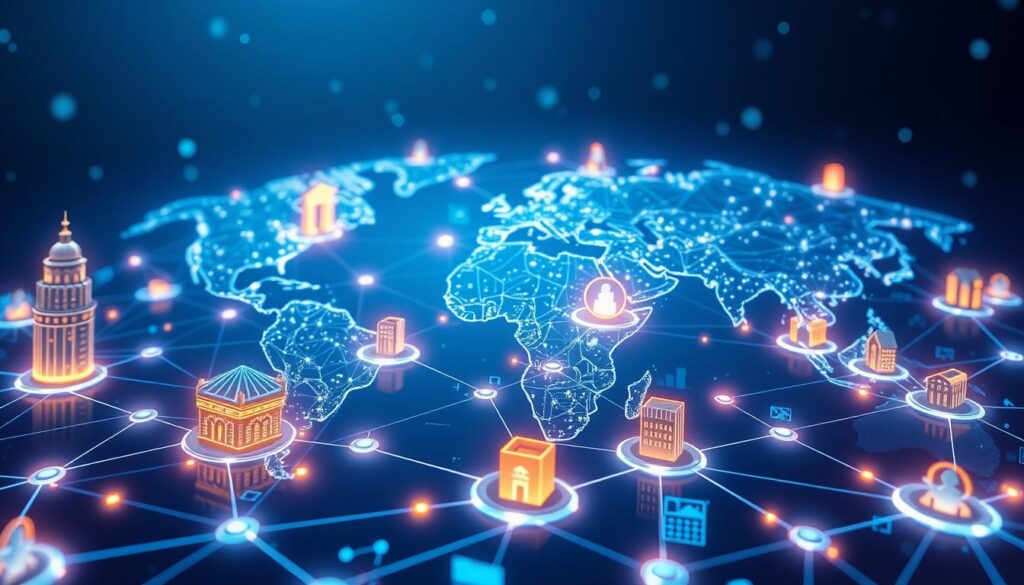
Asset tokenization represents a fundamental shift in how we conceptualize ownership, value, and exchange in the digital age. By leveraging blockchain technology to create digital representations of real-world assets, we’re unlocking unprecedented opportunities for liquidity, accessibility, and efficiency across various asset classes.
As we’ve explored throughout this guide, creating tokenized assets on blockchain platforms involves careful consideration of technical, legal, and business factors. From selecting the right blockchain infrastructure and token standards to navigating regulatory requirements and implementing robust security measures, successful tokenization requires a comprehensive approach.
The journey may be complex, but the potential rewards are substantial. Tokenization has the power to democratize access to previously exclusive asset classes, enhance market efficiency through automation and transparency, and create entirely new business models and investment opportunities.
As regulatory frameworks mature and technology continues to evolve, we expect to see accelerated adoption of tokenization across industries. Those who embrace this transformation early will be well-positioned to capitalize on the tremendous opportunities it presents.
Ready to Tokenize Your Assets?
Our team of blockchain experts can guide you through every step of the tokenization process, from concept to implementation.
Frequently Asked Questions
What types of assets can be tokenized?
Almost any asset with value can be tokenized, including:
- Real estate (commercial properties, residential buildings, land)
- Financial instruments (equities, bonds, funds)
- Commodities (gold, oil, agricultural products)
- Art and collectibles
- Intellectual property (patents, copyrights, royalties)
- Infrastructure (energy plants, telecommunications)
- Carbon credits and environmental assets
The key requirement is that the asset must have clear ownership rights that can be legally transferred and represented digitally.
How much does it cost to tokenize an asset?
The cost of tokenizing an asset varies significantly based on several factors:
- Legal structure: ,000-0,000+ (depending on complexity and jurisdictions)
- Smart contract development: ,000-,000 (depending on customization needs)
- Platform fees: Some platforms charge 1-5% of the tokenized asset value
- Compliance implementation: ,000-,000
- Ongoing maintenance:
Frequently Asked Questions
What types of assets can be tokenized?
Almost any asset with value can be tokenized, including:
- Real estate (commercial properties, residential buildings, land)
- Financial instruments (equities, bonds, funds)
- Commodities (gold, oil, agricultural products)
- Art and collectibles
- Intellectual property (patents, copyrights, royalties)
- Infrastructure (energy plants, telecommunications)
- Carbon credits and environmental assets
The key requirement is that the asset must have clear ownership rights that can be legally transferred and represented digitally.
How much does it cost to tokenize an asset?
The cost of tokenizing an asset varies significantly based on several factors:
- Legal structure: $15,000-$100,000+ (depending on complexity and jurisdictions)
- Smart contract development: $5,000-$50,000 (depending on customization needs)
- Platform fees: Some platforms charge 1-5% of the tokenized asset value
- Compliance implementation: $10,000-$50,000
- Ongoing maintenance: $1,000-$5,000 per month
For smaller projects, using existing tokenization platforms can significantly reduce costs. Enterprise-level implementations with custom requirements typically require larger investments.
What are the regulatory requirements for tokenizing assets?
Regulatory requirements vary by jurisdiction and asset type, but typically include:
- Securities regulations: If tokens represent investment contracts or securities
- KYC/AML compliance: Identity verification and anti-money laundering measures
- Investor accreditation: Verification of investor qualifications for certain offerings
- Disclosure requirements: Providing required information to investors
- Transfer restrictions: Implementing controls on secondary trading
- Data protection: Compliance with privacy regulations
It’s essential to consult with legal experts specializing in blockchain and securities law in each relevant jurisdiction before proceeding with tokenization.
How do smart contracts work in asset tokenization?
Smart contracts are self-executing programs on blockchain networks that automate and enforce the rules governing tokenized assets. In asset tokenization, they serve several critical functions:
- Token creation and issuance: Defining token supply, properties, and distribution
- Ownership tracking: Recording who owns which tokens and in what quantities
- Transfer rules: Enforcing compliance requirements during token transfers
- Dividend distribution: Automatically distributing income or returns to token holders
- Governance mechanisms: Enabling voting and decision-making by token holders
- Lifecycle management: Handling token burns, additional issuances, or redemptions
Smart contracts eliminate the need for intermediaries in many processes, reducing costs and increasing efficiency while ensuring transparent and tamper-proof execution of rules.
What’s the difference between fungible and non-fungible tokens?
Fungible tokens (like ERC-20) are interchangeable with each other, meaning each token is identical to every other token of the same type. They’re ideal for representing:
- Divisible assets (real estate funds, commodity pools)
- Securities and financial instruments
- Utility tokens with identical rights
Non-fungible tokens (NFTs) (like ERC-721) are unique and not interchangeable. They’re suitable for representing:
- Unique assets (specific properties, individual artwork)
- Collectibles with distinct characteristics
- Certificates of authenticity or ownership
Some tokenization projects use hybrid approaches (like ERC-1155) that combine aspects of both fungible and non-fungible tokens to represent complex assets with both unique and standardized components.
,000-,000 per month
For smaller projects, using existing tokenization platforms can significantly reduce costs. Enterprise-level implementations with custom requirements typically require larger investments.
What are the regulatory requirements for tokenizing assets?
Regulatory requirements vary by jurisdiction and asset type, but typically include:
- Securities regulations: If tokens represent investment contracts or securities
- KYC/AML compliance: Identity verification and anti-money laundering measures
- Investor accreditation: Verification of investor qualifications for certain offerings
- Disclosure requirements: Providing required information to investors
- Transfer restrictions: Implementing controls on secondary trading
- Data protection: Compliance with privacy regulations
It’s essential to consult with legal experts specializing in blockchain and securities law in each relevant jurisdiction before proceeding with tokenization.
How do smart contracts work in asset tokenization?
Smart contracts are self-executing programs on blockchain networks that automate and enforce the rules governing tokenized assets. In asset tokenization, they serve several critical functions:
- Token creation and issuance: Defining token supply, properties, and distribution
- Ownership tracking: Recording who owns which tokens and in what quantities
- Transfer rules: Enforcing compliance requirements during token transfers
- Dividend distribution: Automatically distributing income or returns to token holders
- Governance mechanisms: Enabling voting and decision-making by token holders
- Lifecycle management: Handling token burns, additional issuances, or redemptions
Smart contracts eliminate the need for intermediaries in many processes, reducing costs and increasing efficiency while ensuring transparent and tamper-proof execution of rules.
What’s the difference between fungible and non-fungible tokens?
Fungible tokens (like ERC-20) are interchangeable with each other, meaning each token is identical to every other token of the same type. They’re ideal for representing:
- Divisible assets (real estate funds, commodity pools)
- Securities and financial instruments
- Utility tokens with identical rights
Non-fungible tokens (NFTs) (like ERC-721) are unique and not interchangeable. They’re suitable for representing:
- Unique assets (specific properties, individual artwork)
- Collectibles with distinct characteristics
- Certificates of authenticity or ownership
Some tokenization projects use hybrid approaches (like ERC-1155) that combine aspects of both fungible and non-fungible tokens to represent complex assets with both unique and standardized components.

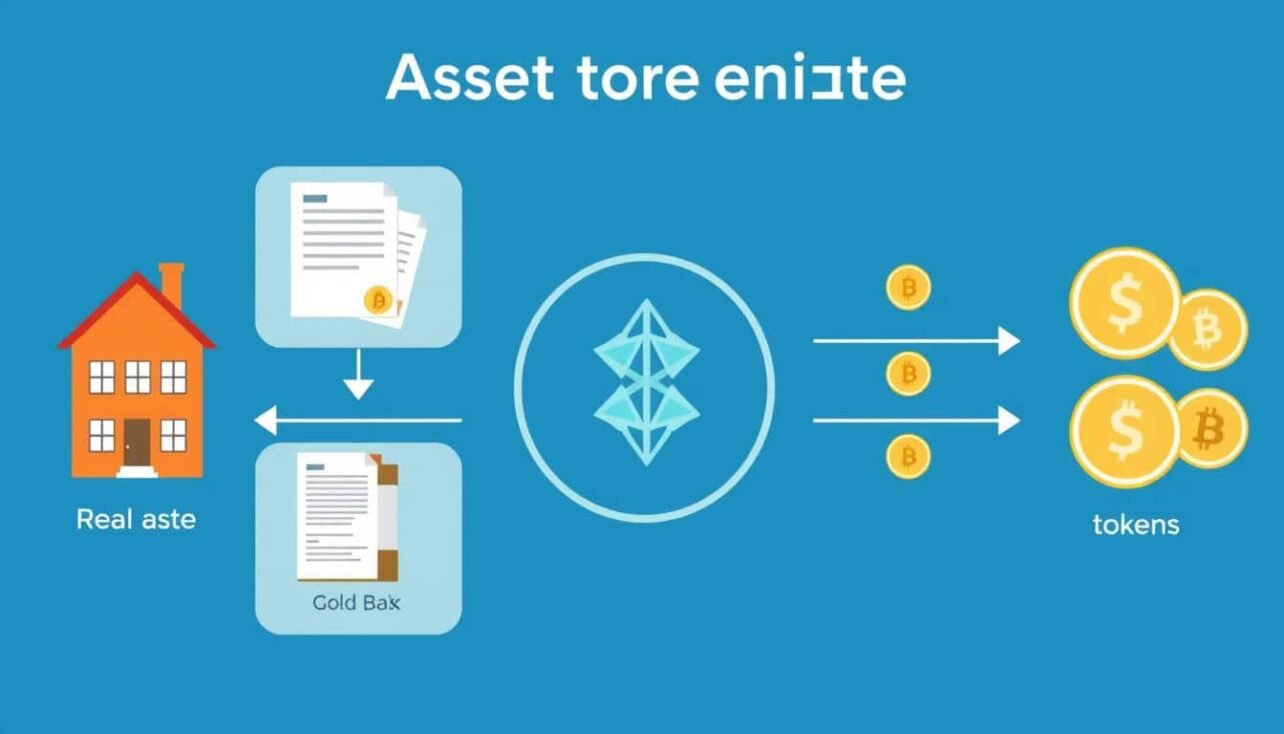
No comments yet